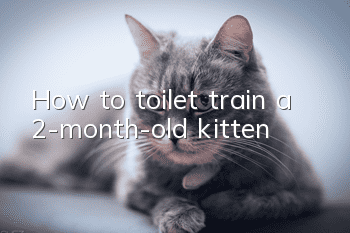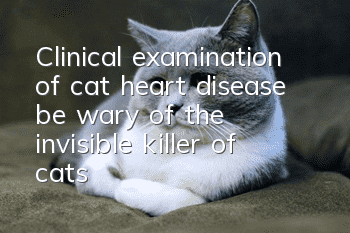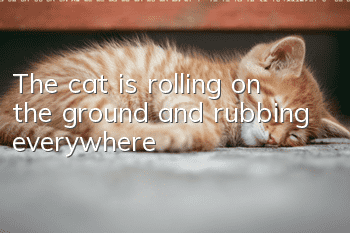What is the function of a cat’s whiskers?

In children’s enlightenment education, there is a lot of popular science about small animals. Among them, there is such a saying about cats. I believe everyone has heard of it when they were children. That is, the length of a cat’s beard is wider than the head, and cats gnaw at mice. When making a hole, I will use my beard to measure the width of the hole to see if the head can go in. If the head can go in, the whole body can go in. Have you all heard of it?
This point is rarely heard when people grow up, because people find that a cat’s beard is sometimes not as wide as the head or shoulders, and there are some holes where the cat’s head will simply get stuck and retreat after getting through it. Even if you can’t go back, can’t you measure the width of your beard? Why is all this different from what you heard when you were a kid? Is everything you heard since childhood all false news?
In fact, this little piece of popular science has its own truth, but it is not completely accurate, because a cat’s whiskers have very complex functions. One of the functions is indeed to collect information by touching objects, and can achieve the function of measuring width. , but cats generally do not rely on their whiskers to accurately measure the width of a hole. This is actually a guess made by people who often see cats drilling into narrow gaps. It makes sense, but it does not reflect in reality. obvious.
Depending on the breed, some types of cats have very long whiskers, far longer than the width of their own heads and shoulders, some types of cats have very short whiskers, and some have basically no whiskers, such as hairless cats. And some cats have straight whiskers, while some have curly whiskers. So what are the specific functions of a cat’s whiskers?
First of all, a cat’s whiskers are a type of coat on its body. There are generally three types of coat on cats. One type is guard hair, which is distributed on the neck, back, limbs, tail, etc. One is villi, which is distributed on the head and face, the inside of the limbs, the abdomen, etc. The third type is vibrissae, which are distributed above the eyes, on both sides of the nose, between paw pads, and inside the auricles. The tentacles on both sides of the nose are whiskers. There are also a few long tentacles above the eyes, a bit like eyebrows. There are also long tentacles on the inside of the auricles. There are also vibrators between the paw pads, which are generally called foot hairs or sole hairs.
Vitiligo, as the name suggests, is used to contact things in the surrounding environment. Generally speaking, the texture of vibrissae is relatively flexible and hard. This structure can ensure that the tip of the hair can be accurately conveyed to the root of the hair after being touched, so that the cat can to analyze the collected information. The tentacles in a cat's ears and soles are not as hard as whiskers. Because their function is to feel the vibrations of the air and the ground contacting the soles of the feet more carefully, they are softer and finer than whiskers, especially the hairs between the paw pads. , but if you look closely, you can still see that the hairs between the cat’s paw pads have a different texture than the hair on the back of the toes.
Let’s focus on the cat’s whiskers. Its main function is to collect environmental information through touch, especially in dark nights. Although cats have a certain degree of night vision, whiskers can helpCats sense the environment and function as a guide cane for blind people. At the end of the cat's whiskers, there is a type of sensing device called proprioceptors, which can collect information based on the texture, strength and distance of the object touched, convert the stimulation signal into nerve impulses and transmit them to the nerve center, analyzing the current environment Variety.
To what extent can a cat’s whiskers be sensitive to environmental changes? Sometimes, slight changes in the flow of air can be captured by the cat’s whiskers without physical contact. In other words, the cat’s whiskers can even Can play a "listening" role. Among the types of hairs on cats, the hairs on the inside of the auricle are the most sensitive for this function. The tufts of hair in the cat's ears and on the top of the auricle can capture the air vibrations transmitted by the sound, helping the cat analyze the source and cause of the sound. Beards can also achieve this effect, but are not as sensitive as the hair around the ears.
Regarding the measurement function of cat whiskers, the biggest function is to measure the distance between the obstacle in front and the cat itself based on dynamic distance changes and air flow, rather than measuring the width of the hole to see if it can be drilled through. Someone did an experiment and cut off the whiskers of cats. It was observed that they would stumble a little when moving, or get into holes that they could not get through at all. Therefore, they concluded that cat whiskers can measure the width of the hole. But what this experiment actually reflects is that the cat cannot get used to the lack of whiskers, and it cannot sense the environment as effectively and accurately as before, so it will bump into or drill holes randomly. Hairless cats, who are born without whiskers, get used to it from an early age, so they don't bump around all their lives.
Many cat owners find that when their cats are playing, the flesh around their mouths bulges and the ends of their whiskers move to the front. This confirms what I just said. When cats are preparing to touch objects, they will make full use of their whiskers to touch the ambient air and objects to collect information, so they will face their whiskers forward when playing. When eating or drinking, cats will move their whiskers to the back, sometimes even close to the face, to prevent the whiskers from being contaminated by debris or water droplets, thereby reducing sensitivity.
You can do a small experiment and touch the cat's whiskers with your fingers. You will find that when your fingers just touch or before they touch the whiskers, the whiskers on this side will turn under the control of the cat. Later, the same goes for the other side. This is the cat's sensitivity in protecting its whiskers, because it doesn't know whether you want to pull its whiskers or what you want to do.
- What will happen if a cat doesn’t bask in the sun?
- What should I do if my cat has a cold?
- What causes cat ears to bleed?
- What should I do if my cat catches a cold in spring?
- What should I do if my kitten urinates randomly?
- What should I do if my Ragdoll cat is sick?
- What should I do if my cat has a bad temper? How to make him soft and gentle!
- How often should cats eat chicken breast?
- How to tell when a cat is giving birth after she is pregnant?
- Are all orange cats fierce? What causes them?



